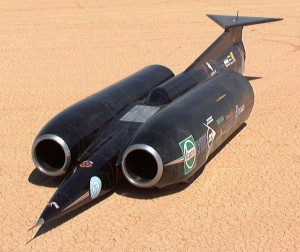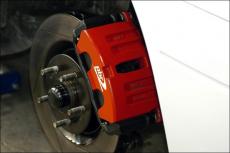Getting enough clearance
When is enough clearance sufficient?
If you’ve modified a lot on cars, you’ll have come across this question. It might be the clearance between the exhaust the bodywork, clearance of a driveshaft at full suspension bump with a chassis member or subframe, or even clearance between a large turbo and bodywork.
Years ago I read an excellent book written by an automotive suspension engineer working in the 1950s. In it he made the (almost throwaway) line that there’s no need to provide tyre clearance at full suspension bump AND full steering lock – the idea being that this situation almost never occurs, and if contact did in fact occur in that situation, the car would be moving so slowly that it wouldn’t matter much anyway.
These thoughts are intruding because at the moment I am massaging a turbo dump pipe so that it clears a steering tie-rod, with the greatest potential conflict occurring at full suspension droop and with full right-hand steering lock.
At full droop but with the wheels pointing straightahead – no problem. And at full steering lock and with the wheels at normal ride height – again no problem.
It’s just at that particular combination – one that again is very unlikely to ever occur – that I have the issue.
I am concerned because if the car has to undergo full engineering approval, I can just imagine an engineer saying something along the lines that conflict should not be able to occur at ANY combination of lock and suspension movement….
And even if clearance is achieved, how much clearance is enough? If I were ornery enough to throw in maximum engine torque reaction movement at just that moment, perhaps another 10mm of clearance would be needed.
But hold on! How could the engine be developing maximum torque if the suspension is at full droop? After all, in that situation there’s very little – next to none in fact – of the car’s weight on the tyre… so how could it transmit the torque anyway? No torque transmission means no transverse engine rocking!
Hmm, what about if the car has an LSD, and a very stiff front anti-roll bar, and is cornering hard enough (at full lock!) to lift a wheel? Then I suppose one could imagine a situation where something like contact could occur.
Aaaagh!

 Julian Edgar, 50, has been writing about car modification and automotive technology for nearly 25 years. He has owned cars with two, three, four, five, six and eight cylinders; single turbo, twin turbo, supercharged, diesel and hybrid electric drivelines. He lists his transport interests as turbocharging, aerodynamics, suspension design and human-powered vehicles.
Julian Edgar, 50, has been writing about car modification and automotive technology for nearly 25 years. He has owned cars with two, three, four, five, six and eight cylinders; single turbo, twin turbo, supercharged, diesel and hybrid electric drivelines. He lists his transport interests as turbocharging, aerodynamics, suspension design and human-powered vehicles.






